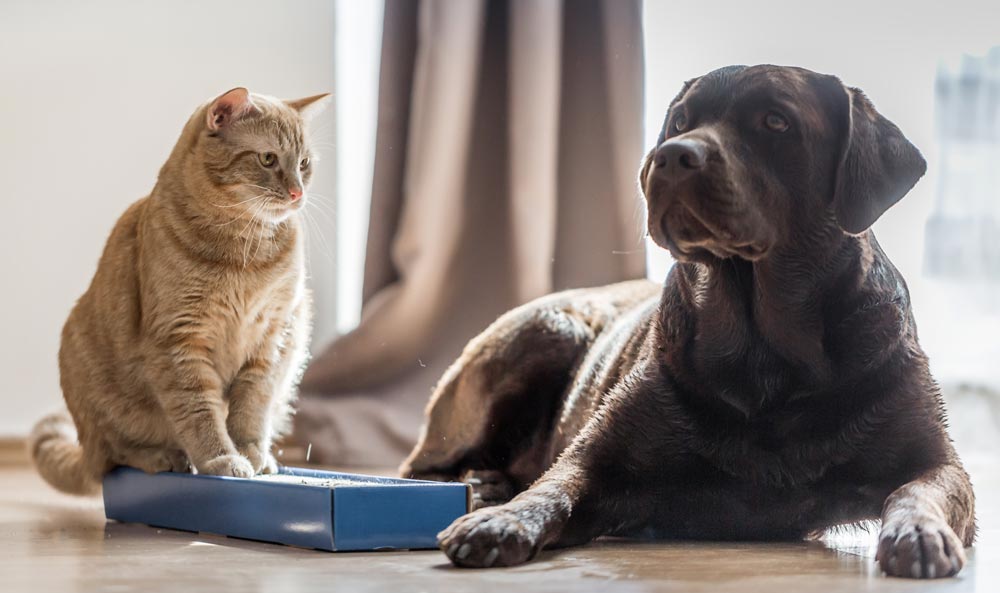Ringworm in Dogs and Cats

Does your pet have ringworm? Even though this may sound like a parasite, ringworm is a fungal infection common in cats and dogs. If your pet has a questionable skin irritation or similar issue, take a look at what you need to know about ringworm, diagnosis, and veterinary treatment.
What Is Ringworm?
Ringworm isn't an actual worm. While it does have the parasite's name in its title, this pet infection starts with a fungus. Instead of the cause of the infection, the name comes from the ring-like rash that develops on the skin.
According to the Merck Veterinary Manual, the fungus Microsporum canis causes nearly 70 percent of ringworm infections in dogs. Microsporum gypseum causes another 20 percent and Trichophyton mentagrophytes is at fault for 10 percent of canine infections. The leading cause of ringworm in dogs is the culprit behind 98 percent of cat cases.
What Are the Symptoms of Ringworm in a Pet?
This fungal infection affects the dog or cat's skin, fur, nails, or claws. Both dogs and cats may have bald spots, crusty patches of skin, and broken hairs and fur in the affected areas. A dog with ringworm may also have smaller-sized skin bumps that look like acne marks. Cats may also have small bumps on the skin. These typically itch, forcing the cat to persistently scratch.
Some pets may also have open or bleeding sores. These can result from over-grooming or scratching itchy skin. The risk for this potential problem makes it important to treat the fungus as soon as possible.
Along with scaly, red, or irritated skin, a pet may have shredding on the surface of their claws. This only happens if the ringworm infection affects the nail area.
Why Do Pets Get Ringworm?
Ringworm is an extremely contagious disease. Dogs and cats can get this fungal infection from direct contact with another animal, a human, or even a contaminated object (such as a towel, pet bed, blanket, or grooming tools). This type of disease does not spread through the air or in respiratory droplets.
Who Should Diagnose Ringworm in a Pet?
Never attempt to diagnose ringworm in your dog or cat. While knowledge of the symptoms and what to look for can make pet owners more aware of the potential for an infection, this disease requires a professional veterinary diagnosis.
The vet will need to examine your dog or cat, look at the irritated patches or lesions, and may recommend a fungal culture. A culture can help the veterinarian to know whether a fungus is responsible for the skin reaction and which fungus is at fault.
Why Should You Call the Vet as Soon as Possible?
Don't take a wait-and-see approach with a suspected case of ringworm. The infection could worsen, spread, cause your pet to scratch away their fur or skin, move to other animals in the house, or infect human household members. This pet disease doesn't discriminate and can affect cats, dogs, and people equally.
Can You Treat Ringworm in a Dog or Cat?
Yes, this fungal infection is treatable. Like a diagnosis, the treatment plan requires the knowledge and experience of a licensed veterinarian. Avoid over-the-counter human antifungal medications. Your pet's body doesn't react the same to some medications as you do. The size and weight difference and physiology of a dog or cat make it important to only use pet medication that a vet recommends.
After the vet diagnoses your pet with ringworm, they will prescribe an antifungal treatment. Follow the vet's directions for use precisely. These medicated products could include dips, shampoos, or oral treatments. The type of treatment the vet chooses depends on your pet's healthcare needs, their size, and the severity of the infection.
Do you need to learn more about ringworm and pet fungal infections? Contact Alta Vista Veterinary Clinic for more information.








